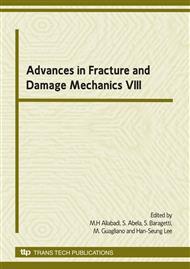p.633
p.637
p.641
p.645
p.649
p.653
p.657
p.661
p.665
Comparison of Tensile Strengths with Different Test Methods in Ultra High Strength Steel-Fiber Reinforced Concrete (UHS-SFRC)
Abstract:
Ultra High Strength Steel-Fiber Reinforced Concrete (UHS-SFRC) is characterized by very high compressive and tensile strength that is about 8 times of ordinary concrete, and high ductility owing to the addition of steel fibers. This paper investigates the relationship existing among the direct tensile strength, flexural tensile strength and splitting tensile strength of UHS-SFRC. Differently from ordinary concrete, it is found that the first cracking strengths in UHS-SFRC obtained through direct tensile test and splitting tensile test are similar, while the strength obtained from flexural tensile test is significantly larger than those from other tests. Based on the experimental results, relationships between the direct tensile strength and flexural tensile strength, between the first cracking strengths in direct tensile test and in flexural tensile test, and between the first cracking strength in direct tensile test and the flexural tensile strength are proposed.
Info:
Periodical:
Pages:
649-652
Citation:
Online since:
October 2009
Authors:
Keywords:
Price:
Сopyright:
© 2010 Trans Tech Publications Ltd. All Rights Reserved
Share:
Citation:


